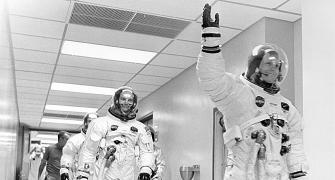Half a century after America's National Aeronautics and Space Administration stopped sending rockets to the moon, NASA's unmanned Artemis I mission lifted off from launch complex 39-B at Cape Canaveral, Florida, November 16, 2022.
The Artemis I mission is the first integrated flight test of NASA's deep space exploration systems consisting of the Orion spacecraft, the Space Launch System rocket and ground systems.
The capsule is expected to return on December 11, 2022 after a three-week test journey.
The mission was finally launched on Wednesday after a long delay of 10 weeks following a series of technical and weather delays.
It is named Artemis after the ancient Greek goddess of the hunt and Apollo's twin sister. NASA's manned spaceflights to the moon in the late 1960s and early 1970s were named Apollo.
The Artemis I mission is intended to test the spacecraft for eventual manned flights.
If the mission is successful, Artemis II is planned to fly crew members to the moon and back by early 2024 with a lunar landing by Artemis III in 2025.
The Orion capsule carries a simulated crew of three mannequins which are fitted with sensors to measure radiation levels and other stresses that crew members will experience.
The objective is to test the durability of Orion's heat shield during re-entry in earth's atmosphere.
Don't miss reading the feature on Apollo 17, NASA's last lunar flight, in the link immediately below, and also the features in the related links alongside and further below.










Photographs curated by Manisha Kotian/Rediff.com
Feature Presentation: Ashish Narsale/Rediff.com









